can i draw in sketchup not 3d
3D Press with SketchUp: ten Tips and Tricks
SketchUp is one of the most popular 3D modeling & blueprint programs for 3D press, every bit nosotros constitute out from our analysis . However, preparing a SketchUp model for 3D printing can be a picayune tricky. That'southward why we put together a list of 10 simple yet effective tips and tricks to make your SketchUp design 3D printable.
1: Prepare your Template to Millimeters or Inches
Some simple clicks before getting started volition brand your life easier: yous may want to set your SketchUp template to metric or imperial units. This way, you won't need to re-scale the printing size of your model later on.
Yous can change the template past clicking on Window > Preferences > Template and selecting '3D Printing – Millimeters' or '3D Printing – Inches'.
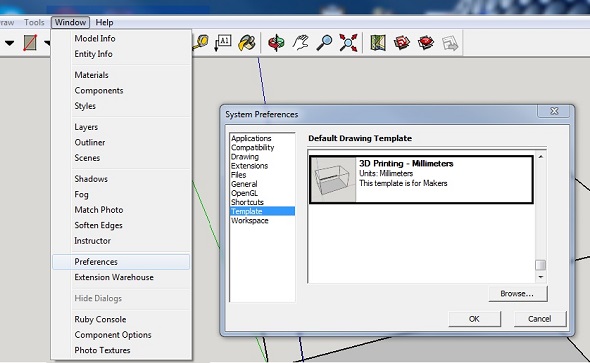
ii: Install the SketchUp STL Extension
Typically you can salve your 3D model every bit a SketchUp file (SKP). Fifty-fifty though our online 3D press service accepts these files, you might desire to get SketchUp'southward free STL Extension. The STL file format is the most unremarkably used in the 3D printing community and will arrive easier to share, print, and edit your design in other software.
With the SketchUp STL extension installed yous can export your model as an STL file. Make certain to select the aforementioned unit type that you chose in your template (millimeters or inches) when exporting, and choose the binary file format to reduce the size of your file.
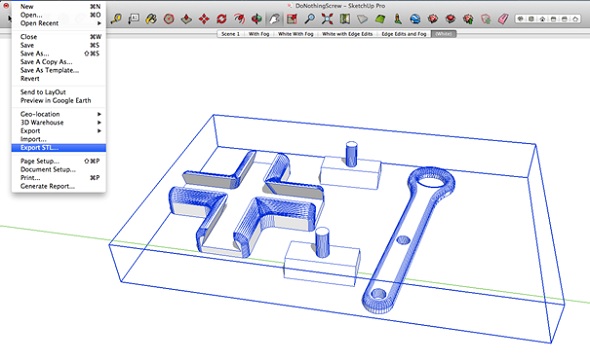
3: Avoid Paper-Thin Surfaces & Set up Wall Thicknesses
In order to make your SketchUp model printable, you need to ensure that each and every surface has a wall thickness. Without setting a wall thickness, a 3D printer has no data about how thick or how thin it is supposed to print your role.
The picture below shows a model with cardboard surfaces (not printable, left) and a solid object with thick walls (printable, correct). If you want to learn more almost how thick your walls need to exist exactly, brand sure to read this blog post.
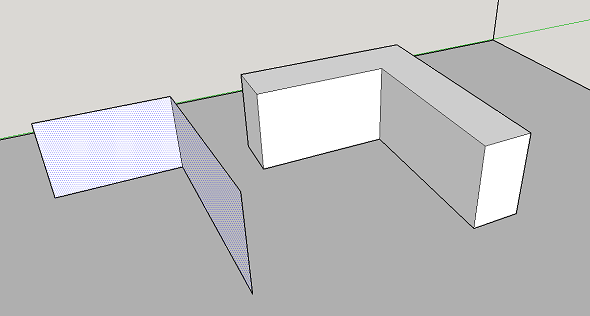
4: Make Your Model Watertight (Manifold)
A printable model must not feature whatsoever holes in its surface. Ask yourself the question: if I were to put water inside my model, would it flow out? If that's the case y'all demand to find these holes and close them. This is 1 of the trickiest parts of creating 3D printable models in SketchUp.
The blueprint below is an example of a model that is not watertight. You lot can clearly come across that there is one big pigsty on its surface.
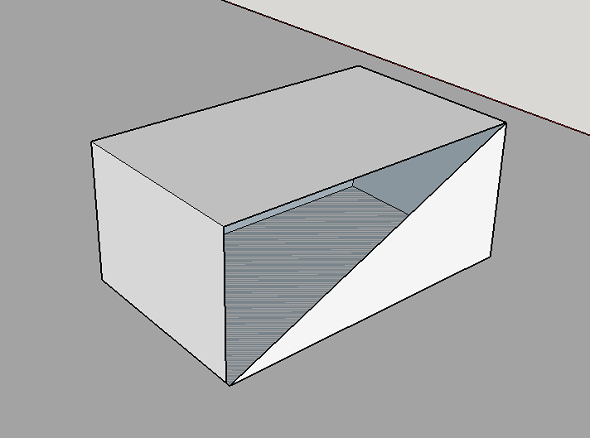
Once this hole is airtight (for case past drawing new lines), SketchUp recognizes that the object is solid on the inside and ready for the printer! You tin see such a watertight (also referred to as manifold) object below.
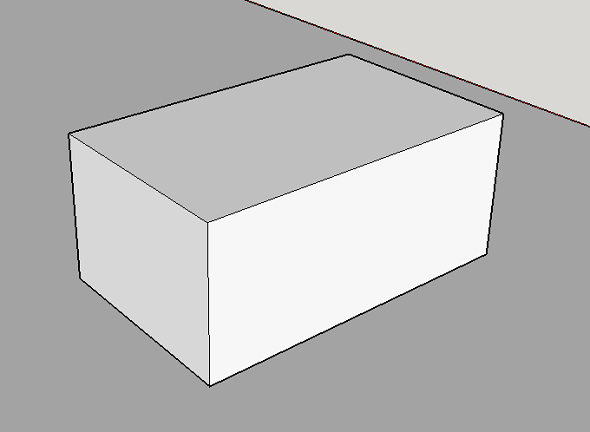
5: Avert Internal Overlapping
Intersections and walls within your design can make your life hard since your model needs to have one continuous 'outer beat'. That's why it makes sense to think almost your model in a 2-dimensional space beginning.
In the case below, the left shape will not be printable in one case it is pulled into a 3-dimensional object since it will characteristic cardboard walls inside the object. The shape on the correct, however, won't be a problem to print once it is pulled into a 3D object because it will only have one 'shell'. It doesn't characteristic newspaper-thin walls on the inside. We'll expect at an automated way to create one outer shell later.

6: Check if Your Model Is Solid
Creating watertight models with one continuous outside can be tough sometimes. Luckily SketchUp lets you cheque if you made any mistakes.
Here's how it works:
- Triple-click on your model with the select tool (this volition select everything).
- Correct-click on your object and select 'Make Grouping'.
- Correct-click on your object again and select 'Entity Info'.
If y'all designed an object with holes (non watertight) and internal intersection (non in one beat) the Entity Info window volition say 'Group'. This means that your model is non printable and you'll take to check information technology again. Correct-click on it and select 'Explode' to re-edit the components.
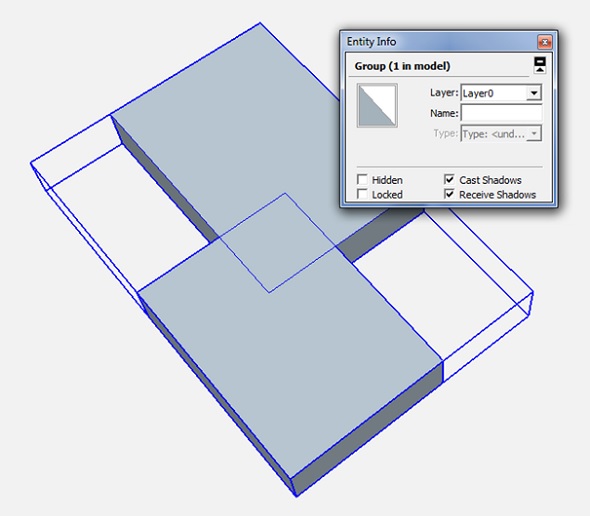
If you designed a watertight model in one shell, the Entity Info window will say 'Solid Group' and so you know that your model is gear up to be 3D printed (in the side by side steps nosotros'll tell you how to ready this).

vii: Look inside Your Model with the 'Hide Tool' and 'X-Ray-Mode'
Looking at your model from the outside ways that the inside is a 'blackness box' for you lot. However, even the inside of your model could feature many modeling mistakes that would make your object unprintable. In the example beneath, the 'Entity Info' window indicates that the object is non solid.
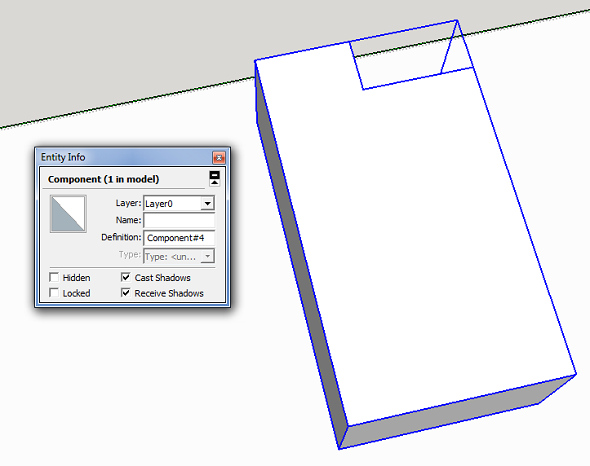
Since information technology looks solid from the outside, it makes sense to take a look at what's going on inside. Select a surface (face) you want to hibernate and select 'Edit' > 'Hide'. And voila: you can find the problem-making mistake. Alternatively, y'all tin switch into x-ray-fashion by clicking on 'View' > 'Face Fashion' > 'X-ray'.
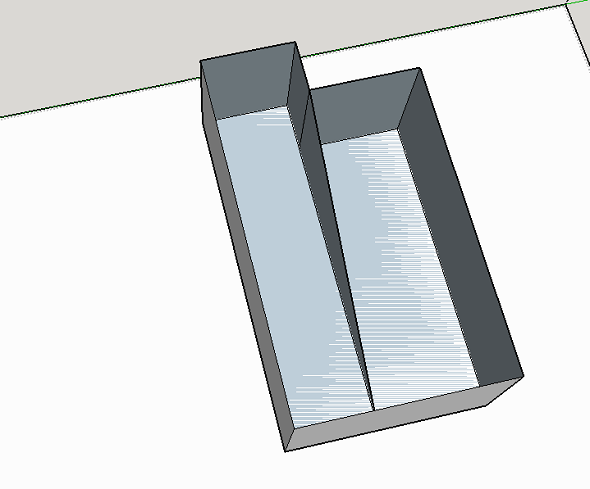
viii: Create an 'Outer Beat out'
Nosotros already pointed out that designs with overlapping objects create problems for 3D printers. The skilful news: at that place'south an automated solution for creating one 'outer shell' around the overlapping objects, deleting all internal overlapping parts.
To kickoff with, we have these two solid blocks. Each of these blocks was 'grouped' separately (Select > Correct click > Brand Group). We also selected the x-ray view to make things easier.
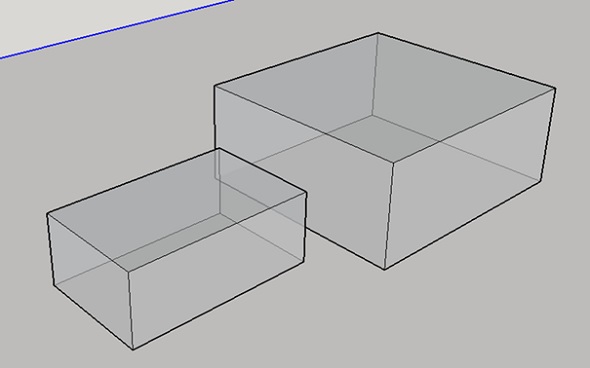
We then move one block into the other. We now accept overlapping areas in the interior of this object.
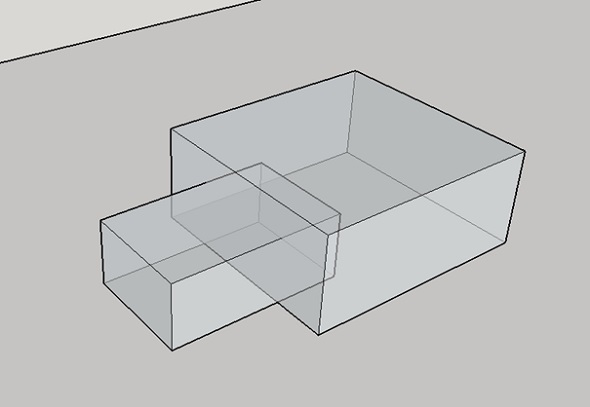
To get rid of these, we select one block, click on 'Tools' and cull 'Outer Shell'.
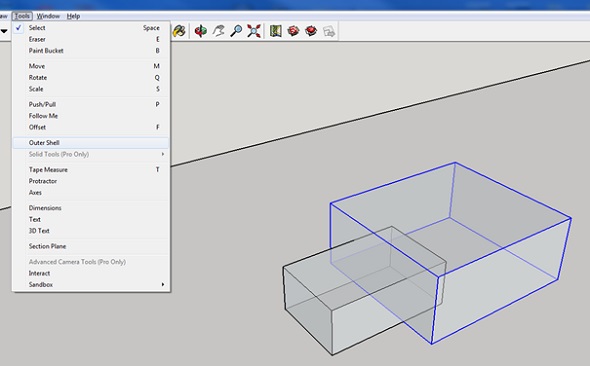
The last affair to exercise is to click on the second cake. SketchUp automatically created one solid grouping out of these blocks. As y'all tin encounter, the internal overlapping parts are gone. The result is a new solid object that is ready to exist 3D printed!
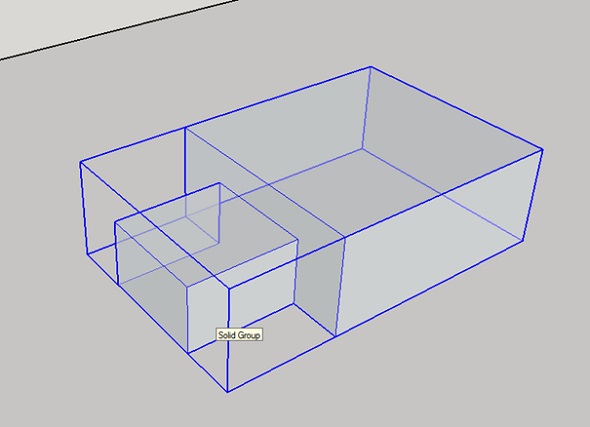
9: Gear up Reversed Faces (Inverted Normals)
Another problem that tin can occur is so-called inwards-facing or reversed faces. This means that a surface of your model is facing in the wrong direction (typically this means that information technology is facing the inside of the object instead of the outside). These surfaces are automatically colored in light blueish.
To fix this, right-click on the inwards-facing surface (face) and select 'Reverse Faces'. You can see an example of this in the image below (left). On the right, yous tin can see the object how it is supposed to be: all faces betoken to the outside again.

ten: Increase Circle/Arc Segments to Getting Smooth Curves
SketchUp 'smoothens' arcs and circles in its visual presentation. Even though circles might look perfectly spherical in SketchUp, they are actually only fabricated of 24 sides. Click on 'View' > 'Subconscious Geometry' to meet theses sides. When beingness printed, this circle might come up out quite edged.
When you select the arc or curve tool, SketchUp will show you their default sides in the bottom right corner. You can then enter a college number to increase the number of sides. Validate your entry by striking the 'Enter' key and then draw your arc or circle.
The image below shows a comparison between the default 24 sides (left) and 150 sides (right).
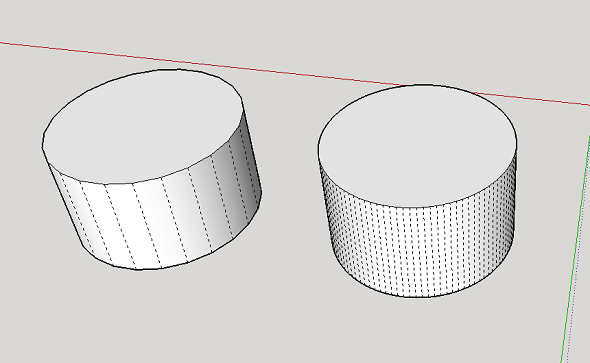
Extra: Automated File Fixing and Preparation
Sometimes issues are tiny and hard to meet with the naked eye. There are SketchUp extensions like the Solid Inspector 2 that find problems automatically and point them out to you. Simply select a group or component and actuate the Solid Inspector tool for an analysis of what would forestall it from beingness a solid manifold.
Another handy extension is CleanUp 3. It allows you to cleans up and optimize your SketchUp model with handy tools similar "Erase hidden geometry" and "Erase indistinguishable faces".
Also, SketchUp added a absurd feature to their 3D Warehouse that was developed past Materialise. When uploading a model to the 3D Warehouse, you can cheque the "I want this to be 3D printable" button (run across video beneath) to get modeling errors fixed instantly. This tool will make your 3D model watertight and permit yous to download it as an STL file. While information technology might lead to somewhat less accurate results, it's a very fast way to get a printable file. So if you're searching for an easy-to-utilise tool that will salvage you a lot of time and effort (no more searching for file problems, no more exhausting fixing sessions), this is the tool for you.
Extra 2: Getting Your High-Quality 3D Print
Did y'all manage to follow our tips and tricks and create a printable SketchUp file? In order to ship it to our printers, download the SketchUp 3D impress service plugin. Alternatively, you tin can upload your models here and cull from hundreds of textile options.
Source: https://i.materialise.com/blog/en/3d-printing-with-sketchup/
0 Response to "can i draw in sketchup not 3d"
Enregistrer un commentaire